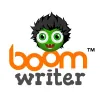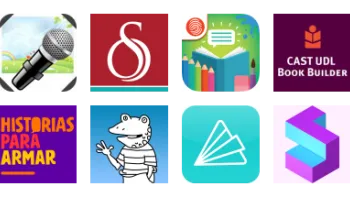
Digital Citizenship Week is October 20–24!
Join teachers worldwide to promote a healthy, positive approach to media and tech.
Take a look inside 7 images
BoomWriter
Pros: Students build on the work of others.
Cons: Voting turn off students who struggle with writing. Thankfully, this is optional.
Bottom Line: There's creativity possibility in this tool's unique brand of collaborative and competitive writing, but teachers should take care to keep things positive.
BoomWriter offers a bit of guidance to help teachers get started. Each of the three project types starts with a brief overview of the writing process. There are also writing prompts to help students get writing. Teachers can use those prompts or create their own. Craft assignments to introduce writing techniques (similes and metaphors, figurative language, dialogue, etc.) and encourage students to use them in their own writing. And, teachers can use vocabulary lists from any subject to give students a chance to use newly learned words.
Writing projects can support units on different subjects. In social studies, students could write historical fiction to explore past events, or have students respond to a story start pulled from a well-known book that challenges students to rewrite the rest. In science classes, teachers could use the open-ended tool to have students create study guides of key terms and concepts. Writing can happen individually or in pairs/small groups. Students can create books as a whole class, or teachers can break the class into two and have students compare the path each group took to develop the same story start. This could even happen between classrooms.
If your students really take to BoomWriter, you might look into the Writing Bee and seasonal events, which offer opportunities to collaborate with other writers across the country and popular authors.
BoomWriter is a web-based writing platform that focuses on getting students to collaborate, both as writers and readers. Teachers can assign three types of writing projects: Story Book, Student Journal, and Other. StoryBook allows students to co-author their own books. Teachers provide a "story start" -- essentially a first chapter -- and students write a follow-up chapter, submitting them for teacher approval. Meanwhile, other students vote anonymously on approved chapters; only the winning chapter's author is revealed, and their chapter is then added onto the story. From there, students go back to the drawing board, write versions of chapter three, submit for approval, and vote again. The process repeats until the book is finished. Student Journal gives students a space where they can submit articles on a regular basis for as long as the assignment stays open. And Other is an open-ended tool that lets teachers create an assignment for any subject. In all writing types, there's an option to provide a list of vocabulary words that students must use in context in their writing. Note that teachers can turn the voting feature on or off and can send work back to students for revision.
Teachers, students, and anyone with a unique code can visit the site to read completed books and even buy hard copies. Extras include Boomer Bucks that students earn for submitting chapters; they'll use these to buy accessories for their Boomer, or avatar. There's also a community writing competition called Writing Bee as well as seasonal events, some with famous authors.
To see how this tool works, watch our video overview of BoomWriter.
BoomWriter gets students to take a more active role in the creative process. They'll feel proud to see a finished novel that they helped write. Some of the story starts are better written -- and more appealing -- than others, but teachers can also write their own. How much students learn with BoomWriter will depend heavily on teachers' scaffolding of the experience: what kind of help, guidance, and feedback they give on students' writing, and how well they tie story building into existing writing lessons. The three different writing options give teachers flexibility to set the best context for writing. The open-ended option helps BoomWriter fit non-ELA subjects .
Student voting brings some friendly competition to the experience. This can encourage some, but could discourage others. Teachers should scaffold the process carefully, especially for students who don't feel they're strong writers, as well as for ELLs and any other students with writing difficulties. The Boomer avatar design may appeal to some, but their big round heads and fanged teeth could come across as strange. The Boomer Bucks marketplace system is a distraction that seems out of place and belies the site's sophistication. Teachers should also be ready to manage expectations for purchasing the finished book as a class, or disparities among students if some parents decide to buy the book and others don't.

















